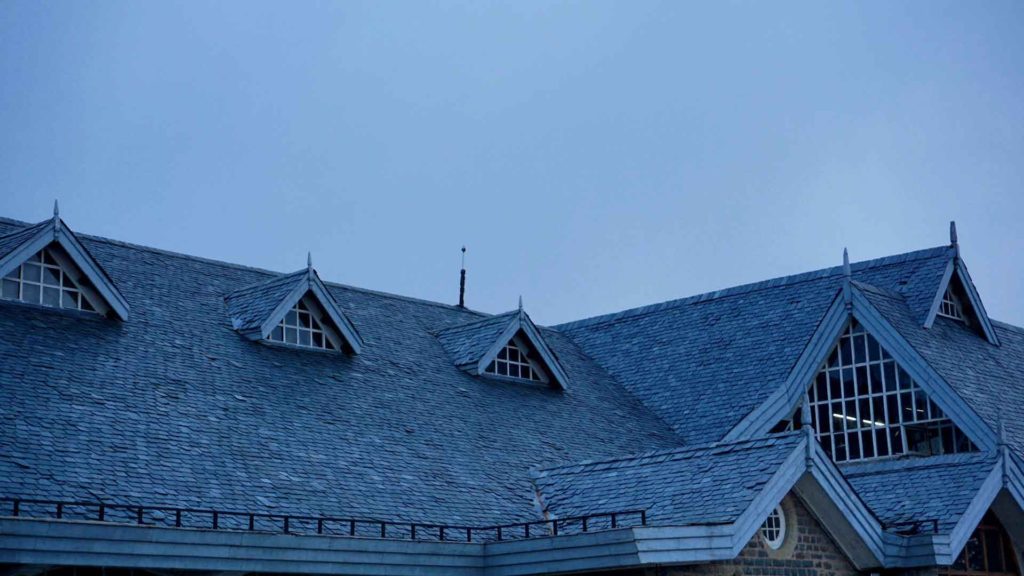Are you tired of constantly worrying about the durability of your roof? Do you dread the thought of dealing with leaks and repairs every few years? If so, it’s time to invest in a roofing material that will stand the test of time. With so many options available, choosing the best one for your home can feel overwhelming. That’s why we’ve created “The Ultimate Guide to Choosing the Longest-Lasting Roofing Material for Your Home.” From traditional asphalt shingles to unique metal alloys, we’ll help you find a roofing solution that will keep your family safe and dry for decades to come.
Longest-Lasting Roofing Material
There are many factors to consider when choosing a roofing material for your home. The most important factor is the climate. You need to choose a roofing material that can withstand the elements in your area. For example, if you live in an area with a lot of snow, you will want to choose a roofing material that can withstand the weight of the snow. Another important factor is the type of home you have. If you have a historic home, you will want to choose a roofing material that is compatible with the style of your home. Finally, you need to consider your budget. Some roofing materials are more expensive than others, but they will last longer.
Asphalt shingles are the most popular type of roofing material in the United States. They are made from a mixture of asphalt and fiberglass or other synthetic materials. Asphalt shingles are durable and easy to install, which makes them a good choice for most homes. However, they don’t last as long as other types of roofing materials, such as metal or tile. Metal roofs are more expensive than asphalt shingles, but they last much longer. Metal roofs can last up to 50 years if they’re properly maintained. Tile roofs are also more expensive than asphalt shingles, but they can last up to 100 years if they’re properly maintained.
Different Types of Roofing Materials
When it comes to choosing a roofing material for your home, there are many factors to consider. The climate in your area, the style of your home, and your budget all play a role in deciding which type of roofing material is right for you. To help you make the best decision for your home, we’ve compiled a list of the different types of roofing materials and their relative lifespan so you can choose the one that will give you the longest-lasting protection for your home.
Asphalt Shingles: Asphalt shingles are one of the most popular types of roofing materials due to their affordability and relatively long lifespan. Depending on the quality of the shingles, they can last anywhere from 15 to 30 years. Metal Roofs: Metal roofs are becoming increasingly popular due to their durability and energy efficiency. They can last upwards of 50 years with proper maintenance. Tile Roofs: Tile roofs are a popular choice in areas with severe weather conditions due to their ability to withstand high winds and heavy rains. They typically last between 20 and 40 years. Wood Shingles: Wood shingles are a popular choice for those looking for a more natural look for their home. However, they require more maintenance than other types of roofing materials and typically only last between 10 and 20 years. Slate Roofs: Slate roofs are known for their beauty and durability but come with a high price tag. They can last upwards of 100 years if properly maintained.
Factors to Consider when Choosing a Roof Material
When you set out to choose a roofing material for your home, there are a few key factors you’ll want to consider in order to ensure you’re making the best decision for your needs. Here are four important factors to keep in mind when choosing a roofing material:
1. The climate in your area: Different roofing materials perform better in different climates. For example, if you live in an area with severe weather conditions like high winds or hail, you’ll want to choose a material that is known for being durable and resistant to damage. Conversely, if you live in an area with milder weather conditions, you may be able to get away with choosing a less durable (and therefore less expensive) roofing material.
2. The style of your home: The roofing material you choose should complement the style of your home. If you have a traditional-style home, for instance, asphalt shingles would be a good choice; but if you have a more contemporary-style home, metal or tile might be better options.
3. Your budget: Obviously, the cost of the roofing material is going to be a major factor in your decision-making process. Some materials are more expensive than others, but it’s important to remember that cheaper isn’t always better – you want to make sure you’re choosing a material that will last and provide good value for the money.
4. The installation process: Depending on the roofing material.
Advantages and Disadvantages of Each Type of Roof Material
Asphalt shingles are the most popular roofing material in the United States, and for good reason. They’re affordable, easy to install and come in a variety of colors and styles. Asphalt shingles also have a relatively long lifespan, averaging 20 to 30 years.
There are two main types of asphalt shingles: fiberglass and organic. Fiberglass shingles are made with a glass fiber mat that is coated with asphalt and covered with ceramic granules. Organic shingles are made with an organic felt mat that is saturated with asphalt and also covered with ceramic granules.
Both types of asphalt shingles have their advantages and disadvantages. Fiberglass shingles are more fire-resistant than organic shingles, but they’re also more prone to wind damage. Organic shingles are less fire-resistant than fiberglass shingles, but they’re less likely to be damaged by wind.
Metal roofing is another popular roofing material, especially in areas that experience high winds or heavy snowfall. Metal roofs are extremely durable and can last up to 50 years or more with proper maintenance. Metal roofs are also fire-resistant and energy efficient, as they reflect heat away from the house in summer and help retain heat in winter.
The main disadvantage of metal roofing is its cost. Metal roofs are usually more expensive than other types of roofs, such as asphalt or tile.
Common Questions about Longest Lasting Roof Materials
-What are the most common types of roofing materials?
-Asphalt shingles, metal roofs, and tile roofs are the most common types of roofing materials.
-How long do different types of roofing materials last?
-Asphalt shingles typically last 20 to 30 years, while metal roofs and tile roofs can last 50 years or more.
-What are the benefits of each type of roofing material?
-Asphalt shingles are the most affordable option, while metal roofs are the most durable option. Tile roofs offer a unique look for your home.
-What factors should I consider when choosing a roofing material?
-Your budget, the climate in your area, and the style of your home are all important factors to consider when choosing a roofing material.
How to Choose the Best Roof Material for Your Home
There are several factors to consider when choosing the best roofing material for your home. The first is the climate. If you live in an area with severe weather conditions, you’ll want to choose a material that can withstand high winds and heavy rains. Metal roofs are a good choice for this type of environment. Another factor to consider is the style of your home. If you have a traditional home, clay tiles might be the best option. However, if you have a modern home, synthetic materials might be a better choice. Finally, you’ll want to think about your budget. Some materials, like slate, can be quite expensive. Others, like asphalt shingles, are much more affordable. By taking all of these factors into account, you can choose the best roofing material for your home.
There is no one-size-fits-all when it comes to choosing the longest-lasting roofing material for your home. You want to consider several factors, such as climate, cost, aesthetics, and more before making a decision. We hope that this ultimate guide has given you an understanding of how to make the right choice and find the perfect roofing material for your needs. Don’t hesitate to reach out if you need any additional help or information on getting the best roofing material for your home!



